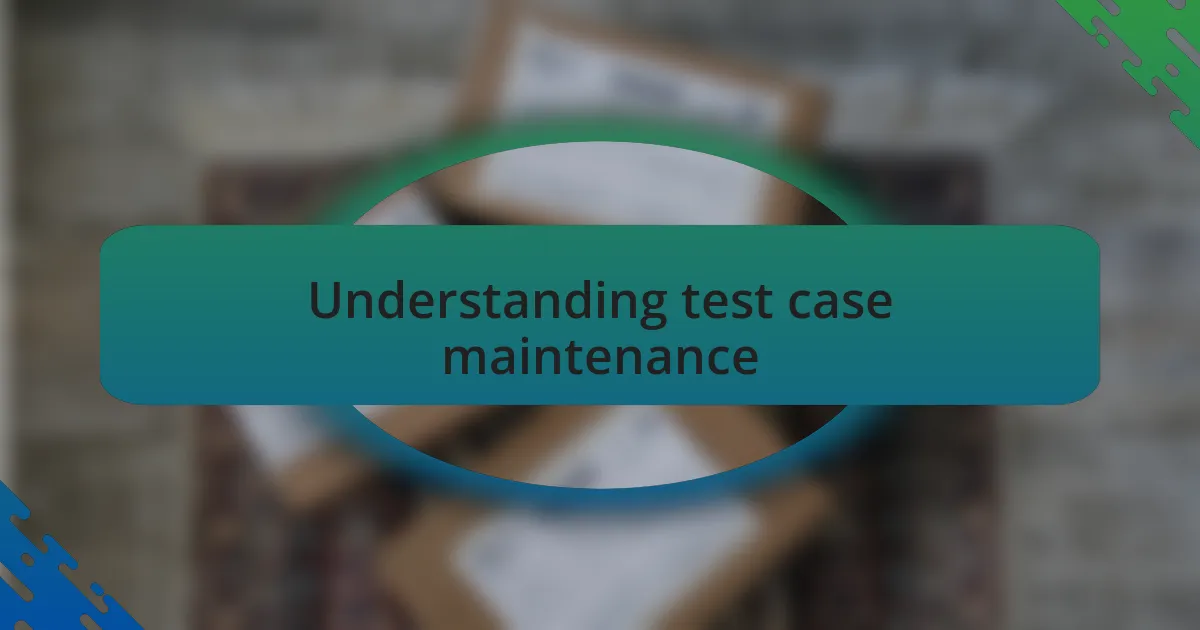Key takeaways:
- Test case maintenance is essential to ensure test cases remain relevant as software evolves, preventing inefficiencies and quality issues.
- Proactive communication with development teams helps to identify when test cases need updates, fostering a culture of quality.
- Regularly updated test cases catch potential failures early, preventing critical bugs and enhancing team confidence during releases.
- Consistent maintenance leads to a sustainable testing framework, improving overall test coverage and reliability of software products.

Understanding test case maintenance
Test case maintenance is a critical aspect of software development that ensures your test cases remain relevant and effective. When I first started in software testing, I often overlooked this step, thinking it was a one-time task. Over time, I realized that keeping test cases updated was just as important as creating them in the first place.
Consider how frequently software evolves; features are added, bugs are fixed, and user requirements shift. Isn’t it frustrating to find out that a test case you’ve relied on is no longer applicable? I’ve experienced the chaos of running outdated tests during release cycles, and it can be a real setback. Regularly reviewing and updating your test cases not only keeps your testing process efficient but also helps you maintain a quality product.
I’ve found that proactively engaging with teams during development discussions significantly aids in identifying when test cases need updates. By fostering open communication and understanding the evolving landscape of the project, I can ensure that my test cases are aligned with the latest project goals. This collaborative approach not only enhances my understanding but also contributes to a culture of quality across the team.

Importance of test case maintenance
Maintaining test cases is essential for catching potential failures before they reach the end user. In my experience, I’ve faced situations where an overlooked change in the software led to a cascade of errors that could easily have been resolved with updated tests. It’s alarming to think how a small oversight can derail an entire project just because a test case was outdated or irrelevant.
I remember a time when a significant feature was released without proper test coverage because the existing test cases hadn’t been revised to reflect the new functionality. The frustration in the team was palpable as we scrambled to address critical bugs that could have been prevented. It made me realize that maintenance is not just about preventing failures but also about fostering confidence within the team and ensuring a smoother release process.
Additionally, consistent maintenance of test cases helps in building a more sustainable testing framework. I’ve discovered that when test cases are regularly revisited and refined, they not only reflect the current requirements but also enhance overall test coverage. This ongoing practice encourages a disciplined approach that empowers teams to produce reliable software and promotes a shared commitment to quality. Have you ever felt the weight of a broken release? By prioritizing test case maintenance, many of those burdens can be lifted.